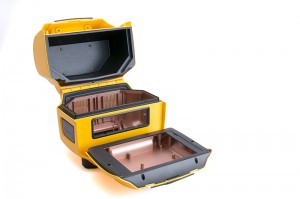You have a strong design for your part, a clear vision of what it’s supposed to do and the customer seems happy. All is well, correct? In actuality, you may want to reevaluate these matters.
Parts will only perform as well as the material used. To make sure you don’t fall short, here are four variables to keep in mind for selecting the right urethane casting resin and the processes involved.

Performance – Mechanical stress, tolerances, final surface finish and the external environment all play a role in resin selection. Every urethane is blended differently to meet unique characteristics. Knowing this, it’s clearly important to explicitly understand your specifications and their outcomes.
If your resin supplier can’t meet your specifications in a resin formula, it’s time to find someone with more capability.
Processing – During the mold filling process, you’ll want to strike a balance between the needed quality and the length of the process. Consider the “gel time” or the time needed to completely fill the mold before curing begins. If your part is expected to perform in high-pressure or extreme temperatures, the process will take longer. If your part doesn’t need to stand up to an extreme environment, don’t spend the time and money on a complicated process.
Resin type
Thermosetting urethane resins come in three common types — Epoxy, Vinyl Ester and Polyester. Epoxy is the toughest, often used for structural design and extreme environments. Vinyl Ester stands up well to high temperatures with a lighter weight. Polyester is more flexible and easy to work with, but not quite as durable.
Safety – Once a urethane casting resin is completely cured, it is safe to handle. Before curing is complete, be careful not to let the material come in contact with bare skin. Wear gloves, since the curing time will vary depending on the resin selected.
Product Development Solutions stands ready to help with your best idea from design to material selection to final product. The first step is to contact our experts today.
